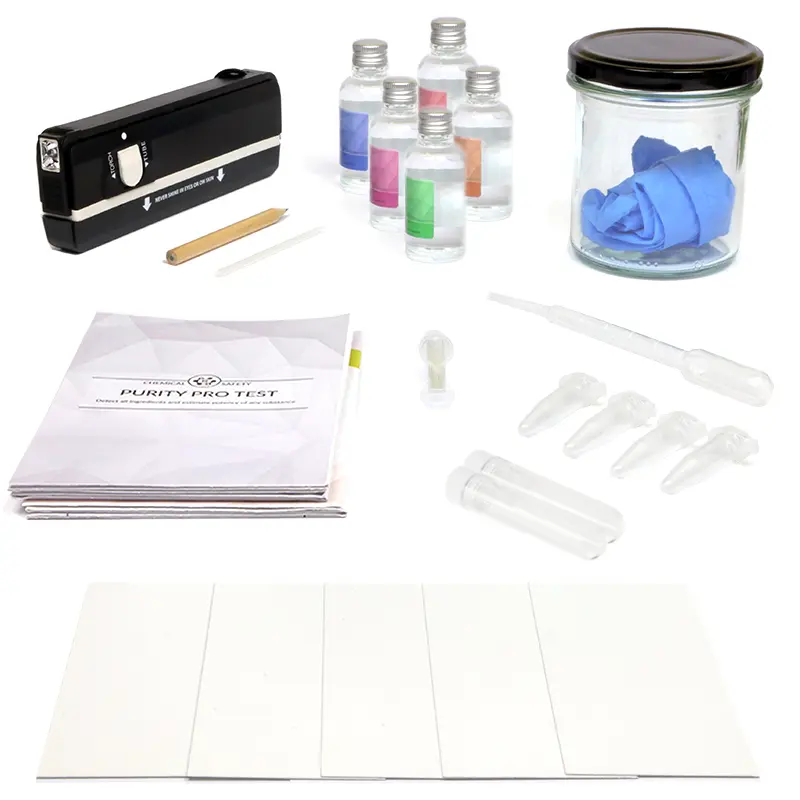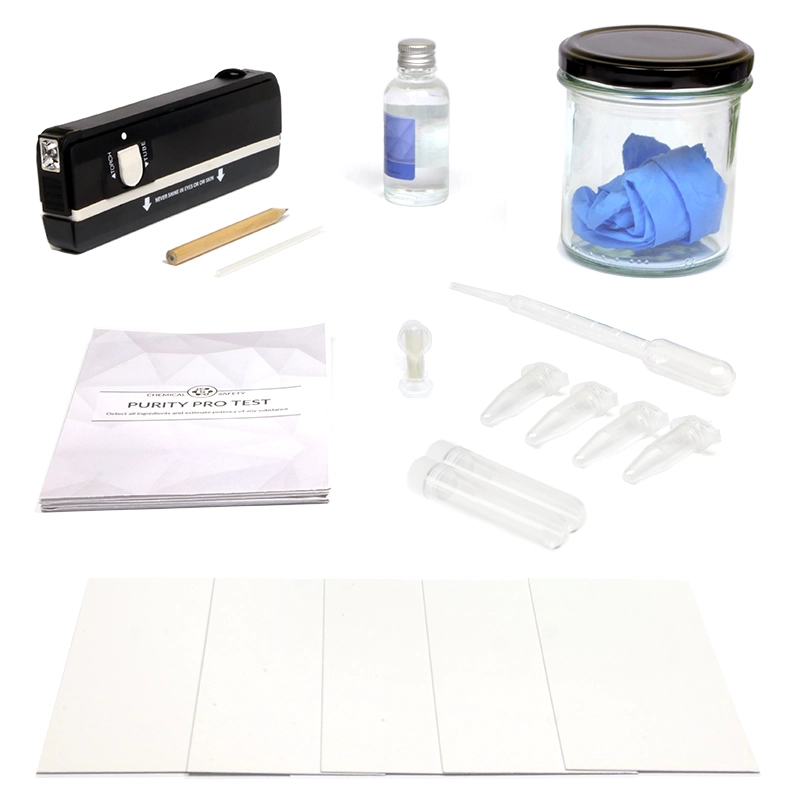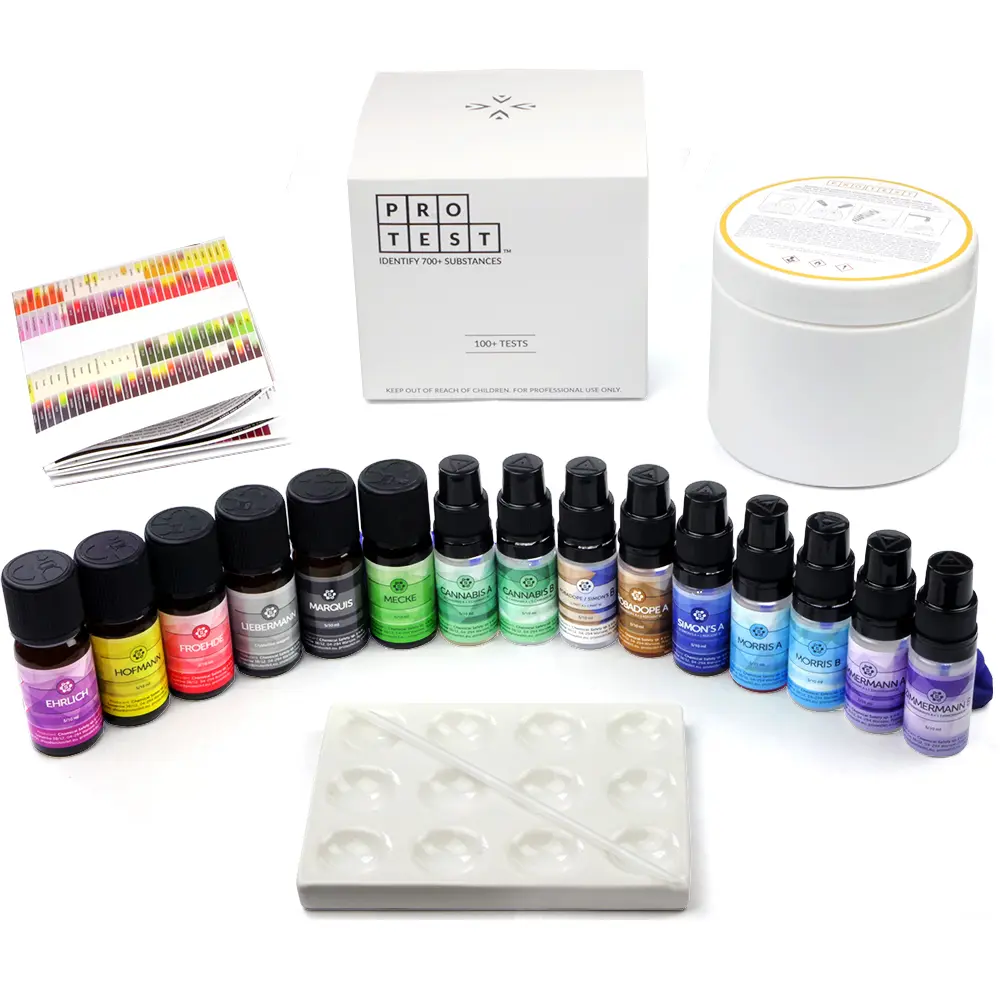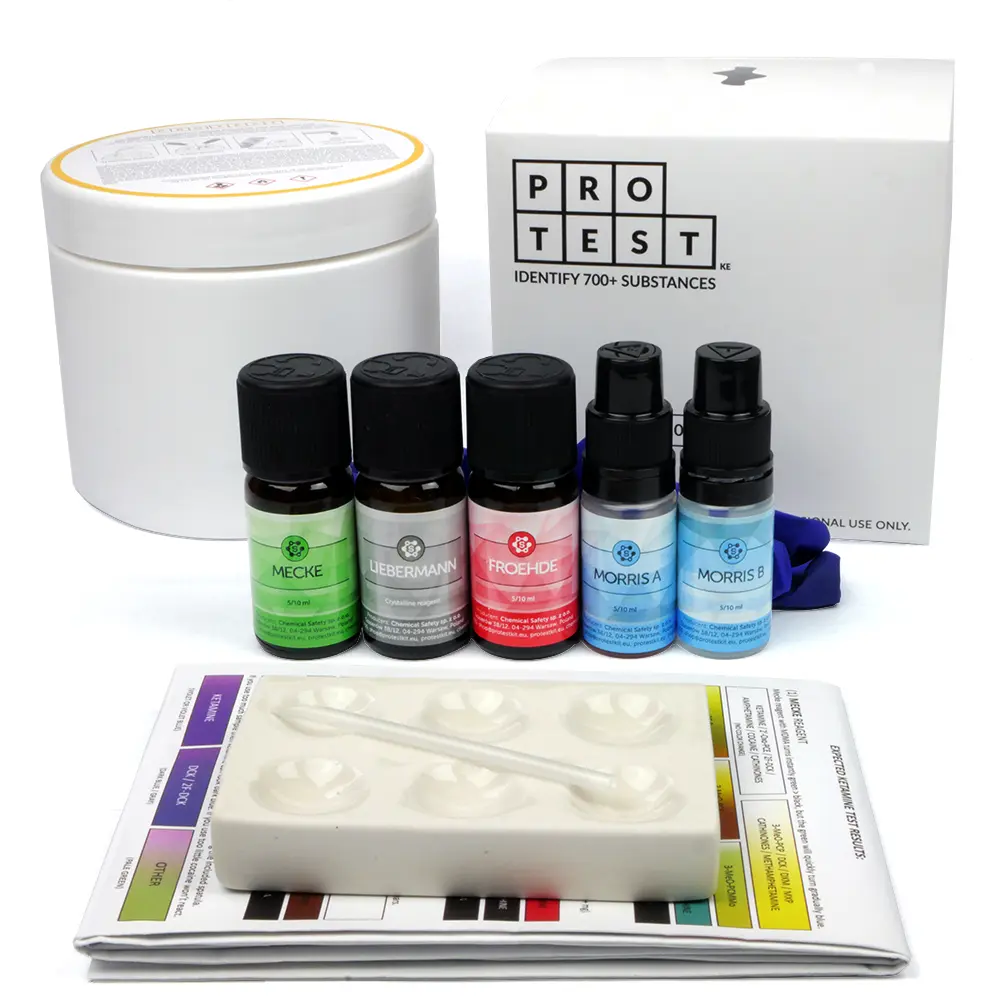Morris reagent reactions with ketamine
Ketamine is a substance commonly used in anesthesia which is also found in recreational settings. Due to its dissociative effects at amounts lower than the anesthetic dose, ketamine is popular on the black market in many countries. Due to the unregulated trade, there is a lack of quality control, making it essential to check ketamine using colorimetric tests.
In the past, Mandelin reagent was commonly used to check ketamine; however, it is not a reliable method (more information in our article Is Mandelin reagent reliable?). Currently, it is recommended to use Morris reagent, a modified Scott’s test. However, the Morris test is not entirely free from challenges in correctly interpreting results, as described in the article below.
Possible false results of the Morris test with ketamine:
- False negative
- False positive
- False positive suggesting DCK
Results of the Morris Ketamine Test
Colorimetric test results can sometimes be false, meaning falsely positive or falsely negative. These indicate a different state than the actual one, such as the absence of a substance or the presence of a substance that is not there. In the case of testing ketamine, this is a common issue with Morris reagent. The use of too small or too large a sample can lead to an incorrect result. Another reagent that may encounter issues with ketamine is Liebermann. It reacts with ketamine in a very weak yellow color, requiring a relatively large amount for a clear reaction. In this article, we focus on the Morris reagent.
False negatives, in other words, results indicating the absence of a substance when it is actually present. The Morris reagent is very sensitive, but using too small an amount (1-2 mg) can result in a reaction so weak that it might be mistaken for a negative result. In the image below, we present a comparison of reactions with approximately 1, 5, and 2 mg. Only around 5 mg is a suitable sample for 1 drop of Morris reagent A and 1 drop of Morris reagent B.
It’s also essential to remember that the Morris test requires stirring for 30 seconds; simply adding a drop of A and a drop of B is not sufficient.
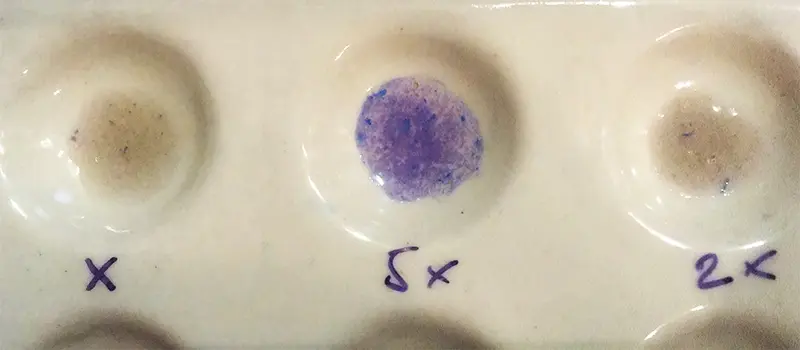
Morris reagent results with ketamine

Morris reagent result with big sample of ketamine
Another type of false negative is the absence of the expected reaction while an unintended color change occurs simultaneously. This situation often occurs when using a sample larger than 5 mg. The color may turn navy instead of violet, the main expected reaction of Morris with ketamine. A navy reaction may suggest the presence of DCK or etazen, giving cause for concern. In such a case, we recommend repeating the test with a much smaller sample.
False positive with the Morris reagent and ketamine is a purple reaction to substances other than ketamine. Synthetic cathinones, in particular, are known to interact with the Morris reagent in this way. Compounds like 4-CMC, MMC, and similar ones may, without additional tests, falsely suggest the presence of ketamine in the sample, even if it is not there at all.
- Mecke excludes less common dissociatives, lidocaine, cathinones, and various stimulants.
- Froehde excludes synthesis residues, 2C-B, MDMA, other stimulants, and some dissociatives.
- Liebermann excludes some dissociatives, 2C-B, MDMA.
- Morris confirms the presence of ketamine or cocaine, cathinones, DCK, 2F-DCK, or FXE.
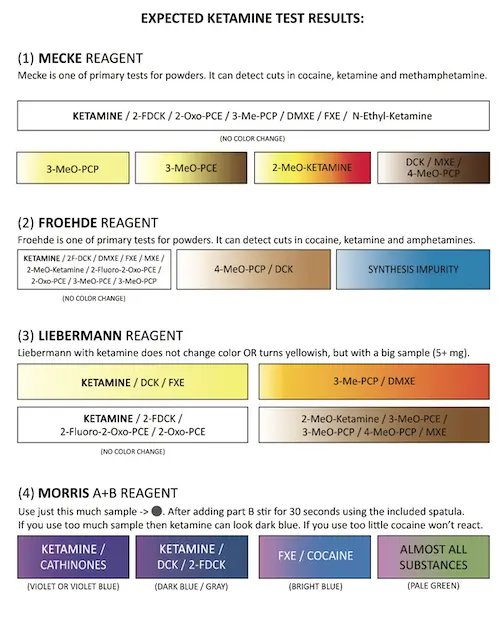
Instrukcja testów na ketaminę
Ketamine test kits
Best test kit for ketamine is PRO Test Ketamine Test Kit, which includes reagent tests Mecke, Froehde, Liebermann i Morris. It can reliably confirm presence of ketamine and help rule out most common adulterants such as DCK or FXE. To check the potency % of ketamine pair reagents with Ketamine Purity Test Kit (TLC).
Recommended test kits for ketamine:
A positive or negative test kit result does not indicate if a substance is safe. No substance is 100% safe.
